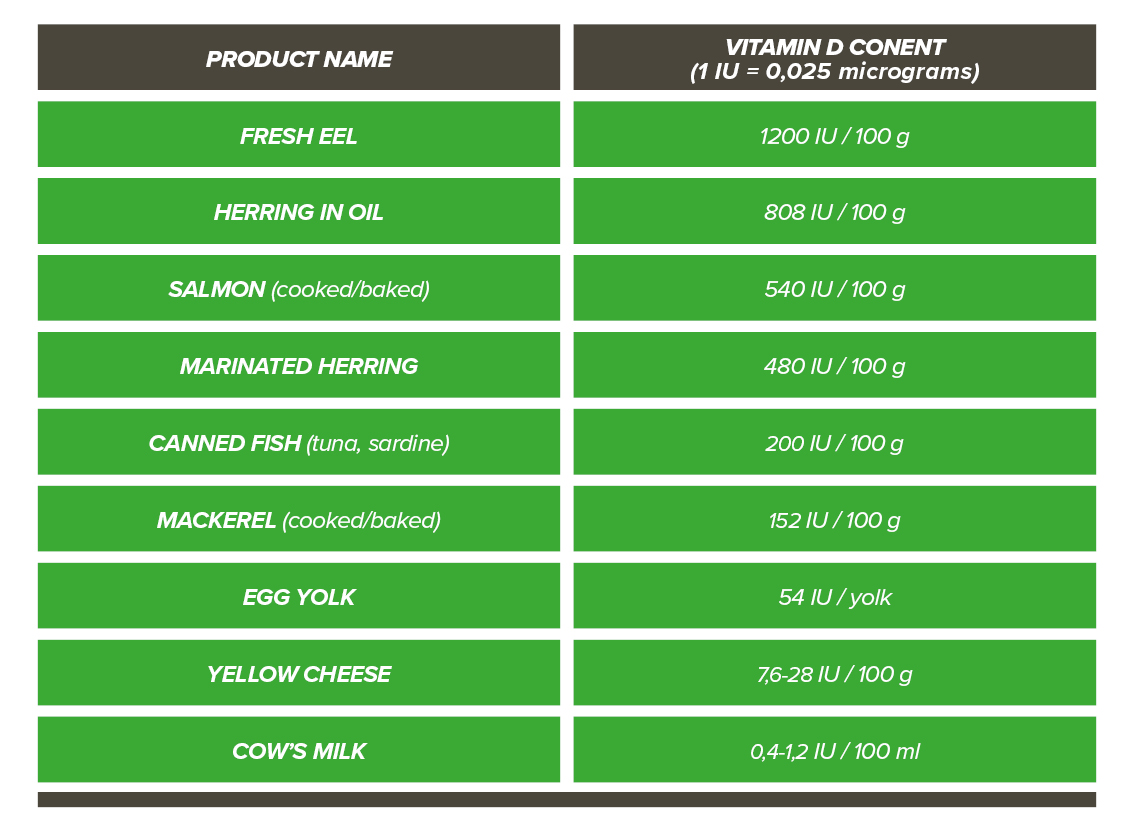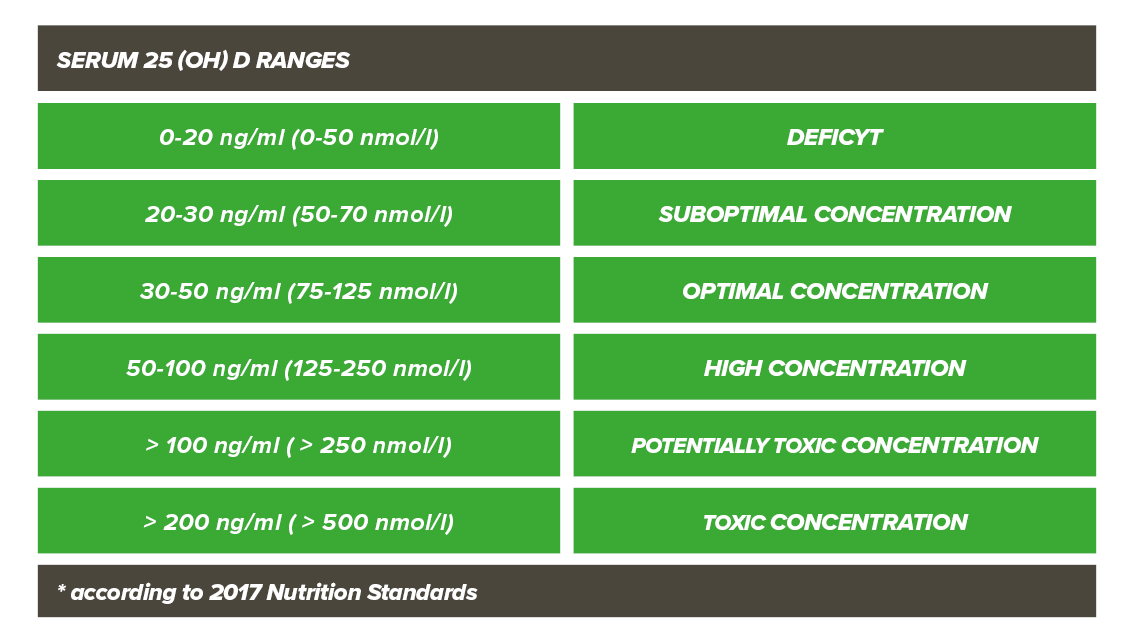Vitamin D has been popular among scientists for many years. Its primary role is to influence bone mineralization, calcium and phosphorus metabolism. However, recent studies have shown that vitamin D still has many other significant functions in our body. Its deficiency is associated with other ailments associated with metabolic, endocrine and inflammatory processes. In addition, it is believed that its insufficient level may negatively affect the performance of athletes or increase the risk of infection and injury.
What is vitamin D?
What is vitamin D?Vitamin D is one of four fat-soluble vitamins. Its uniqueness results from the fact that it is synthesized in human skin from provitamin D during exposure to sunlight, additionally it has an active effect, like a hormone (pleiotropic effect). Receptors for vitamin D are found in many tissues, including in muscle tissue, cells of the immune system and blood vessels. To date, it has been shown to affect the expression of over 200 different genes, and thus affect calcium and phosphate metabolism, bone mineralization, and regulate the muscular, endocrine, immune and nervous system.
Are we at risk of vitamin D deficiency?

Vitamin D deficiency is common in Central Europeans, including Poland. The reason for this is limited skin synthesis and a small amount of food sources. 80–90% of vitamin D is derived from endogenous synthesis, and 10–20% from food. In Poland, synthesis through the skin is possible in a short time window, from the end of April to the beginning of August. In addition, it should be remembered that even if skin synthesis is possible, it does not always occur. Many people work in closed rooms, put on clothing that covers most of the body, use sunblock or stay outside only in the evening. Normal skin synthesis occurs when you are outside between 10:00 and 15:00, for about 15 minutes, with 18% of your body exposed, e.g. exposed face, forearms and calves.
Vitamin D skin synthesis is affected by factors such as:
• latitude - inhabitants of areas over the 37th parallel are not able to synthesize vitamin D in the period from November to February;
• BMI - the higher it is, the less vitamin D is released into the bloodstream;
• skin pigmentation - the lower it is, the higher the vitamin D synthesis. People with darker complexions synthesize less of this vitamin than representatives of the white race;
• age - the higher, the lower the vitamin D concentration.
There are a small amount of vitamin D sources in foods. Products that are rich in vitamin D are fatty sea fish (salmon, herring), eggs or fish oil. However, the consumption of these products is usually insufficient to maintain an optimal concentration of this vitamin. Therefore, supplementing this way is not practical.
Vitamin D content in products:

Pleiotropic effect of vitamin D
Available knowledge about vitamin D shows its preventive potential in many disease entities. Most often associated with its incorrect level are:
• diabetes,
• cancer,
• heart diseases,
• autoimmune diseases.
The association of obesity with vitamin D is also documented because its low level negatively correlates with BMI and abdominal obesity. Its low concentration contributes to insulin resistance, pancreatic beta dysfunction, which is associated with the formation of metabolic syndrome. It also plays a significant role for the athlete. The goal of training is to provide a stimulus that by disrupting the body's homeostasis, causes the appearance of adaptation, which allows it to constantly develop. Nutritional strategies supporting and supplementing the body's response to a physical or metabolic challenge are intensively studied. Recently, data appeared suggesting the beneficial role of vitamin D in repairing and building muscle mass. In addition, due to its classic functions, deficiencies result in bone disorders. In addition, it also participates in anti-inflammatory and neuroprotective processes, which ensures a milder course of many diseases.
Vitamin D supplementation
Since vitamin D deficiencies are commonly diagnosed and skin synthesis and dietary vitamin supply are usually insufficient, supplementation should be considered. It is recommended to provide oral vitamin D in adults from October to March, or throughout the year depending on the results of the study. In order to make up for deficiencies to an appropriate level, doses of 2000–4000 IU per day can be safely used. However, it is best to adjust the supply individually based on your blood 25 (OH) D test results. The decision to take higher doses of vitamin D should be discussed with your doctor. Supplementation must be considered individually, but remembering that deficiencies are recorded in up to 70-80% of the elderly and 50% of young people.
Serum 25 (OH) D ranges:

Summary

It is definitely worth taking care of maintaining an optimal level of vitamin D in the serum. It's worth implementing the habit of consuming foods rich in this vitamin and exposing yourself to the sun's rays. In addition, also enable supplementation, which is recommended by doctors, nutritionists, as well as scientific authorities. Vitamin D is easily available, and its intake brings enormous health benefits, is associated with the prevention of many civilization diseases and undoubtedly supports the achievement of better and better sports results.





